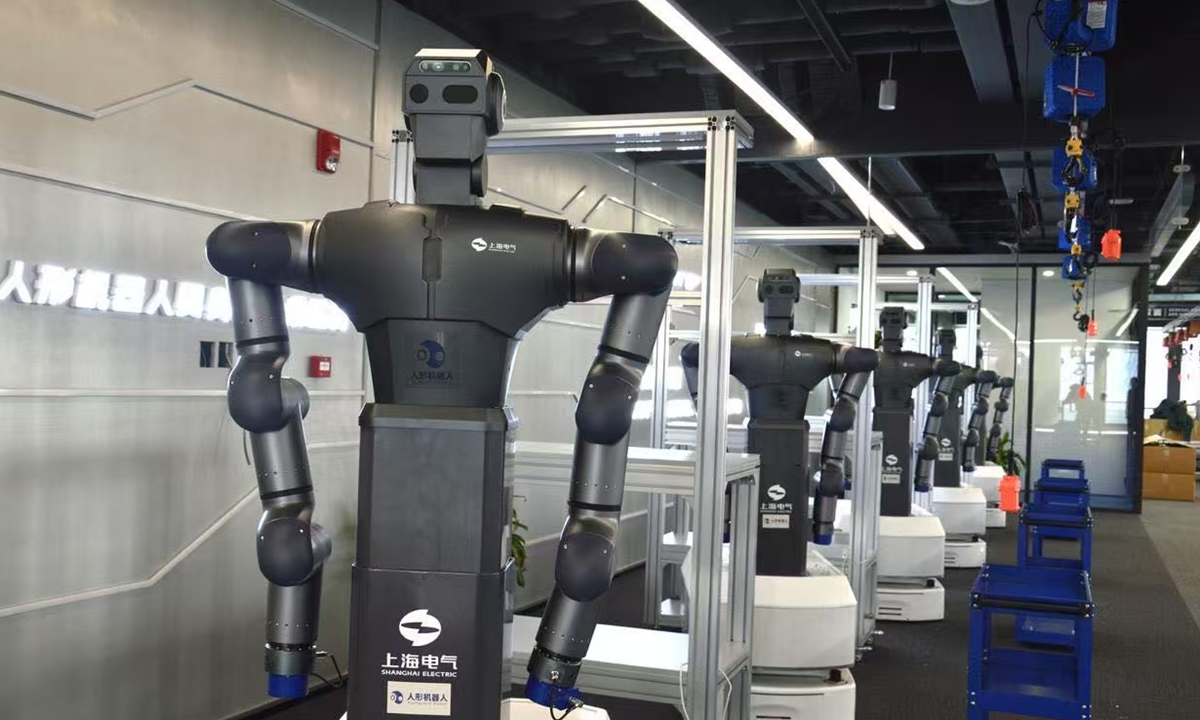政府新闻
中国首个异质类人机器人训练设施即将投入使用 2025-04-08

Humanoid robots undergo training at the National and Local Co-Built Humanoid Robotics Innovation Center in Shanghai.
China's first heterogeneous humanoid robot training facility, where humanoid robots in a variety of types are trained for their wide applications in different daily life and workplace scenarios, will be officially begin operation in July, expected to enable large-scale data sharing and utilization of heterogeneous humanoid robots, empowering the entire industry.
Run by the National and Local Co-built Humanoid Robotics Innovation Center, the facility is located in Zhangjiang area, Shanghai, and occupies an area of over 5,000 square meters, with more than 100 types of robots - the largest number of varieties in the country - from over a dozen enterprises being trained. Through simulating everyday and workplace scenarios at the training center, data are produced and collected while the robots are being trained to establish a database for the training of more robots and large models widely applied in industrial, service, medical, agriculture and other fields, the Global Times learned from the center on Monday.
According to Xu Bin, general manager of the National and Local Co-built Humanoid Robotics Innovation Center, regarded as foundational infrastructure for the development of artificial intelligence, the center is designed to drive and support the development of the humanoid robot industry by addressing key challenges, including developing shared technologies, building ecosystems, creating representative products, and implementing solutions in critical application scenarios, The Paper reported.
"We established the center to enable large-scale data sharing and utilization, empowering the entire industry," Xu said, explaining that heterogeneous humanoid robots are robots with varying structures and functional modules. Robots developed by different manufacturers differ in aspects such as the number of joints and motor power consumption, leading to distinct data sets that are not universally applicable.
During the first phase of the project, the robots will be trained with approximately 45 atomic skills such as grasping, picking, placing and transporting for establishing an atomic skill library for robotic manipulation tasks in specific scenarios, such as industrial and service scenarios, Yang Zhengye, director of market systems of the National and Local Co-built Humanoid Robotics Innovation Center, told the Global Times on Monday.
"The embodied robots being trained at the center are expected to accomplish more complex tasks requiring a sequence of actions based on their autonomous judgments formed through searching and matching the data collected through training," Yang said.
In order to accomplish a task, the robots will be trained to understand human's instructions, break the task down and then finish it by using visual and motion data, he said.
At the center, humanoid robots continuously practice actions such as "grasping" by replicating movement data collected from human trainers.
According to a data collector, generating data, collecting data, augmenting data, and analyzing data are the most fundamental core tasks at the training center. A single action may need to be repeated up to 600 times a day by a data collector for the robots to learn from. For humans, the action of "grasping" is simple, but for robots, even small differences in the size, shape and placement angle of the object being grasped will generate different data, The Paper reported.
At the training center, robots of various sizes simultaneously undergo training for different scenarios and tasks, focusing on 10 key scenarios, including industrial, domestic, and tourism services. These tasks are broken down into specific actions, such as folding clothes, picking up and moving objects, organizing shelves, and cleaning large equipment in dangerous environments.
According to Yang, the training center is currently undergoing testing and adjustments, and is capable of generating 20,000 to 30,000 data entries daily. It is expected to enter full operation in July, with a daily output of up to 50,000 data entries. It is expected that the collection of over 10 million real-machine data entries will be achieved within the year.
In the future, the center plans to establish a data exchange platform, allowing robot companies to share data from different scenarios - such as home appliances or healthcare - reducing duplication and greatly improving efficiency.
Training data from diverse humanoid robots will be used to develop a general-purpose embodied intelligence foundation model. Under the command of this "super brain," robots from different manufacturers and of different forms will be able to collaborate efficiently and upgrade together, Yang said.
Source: Global Times
